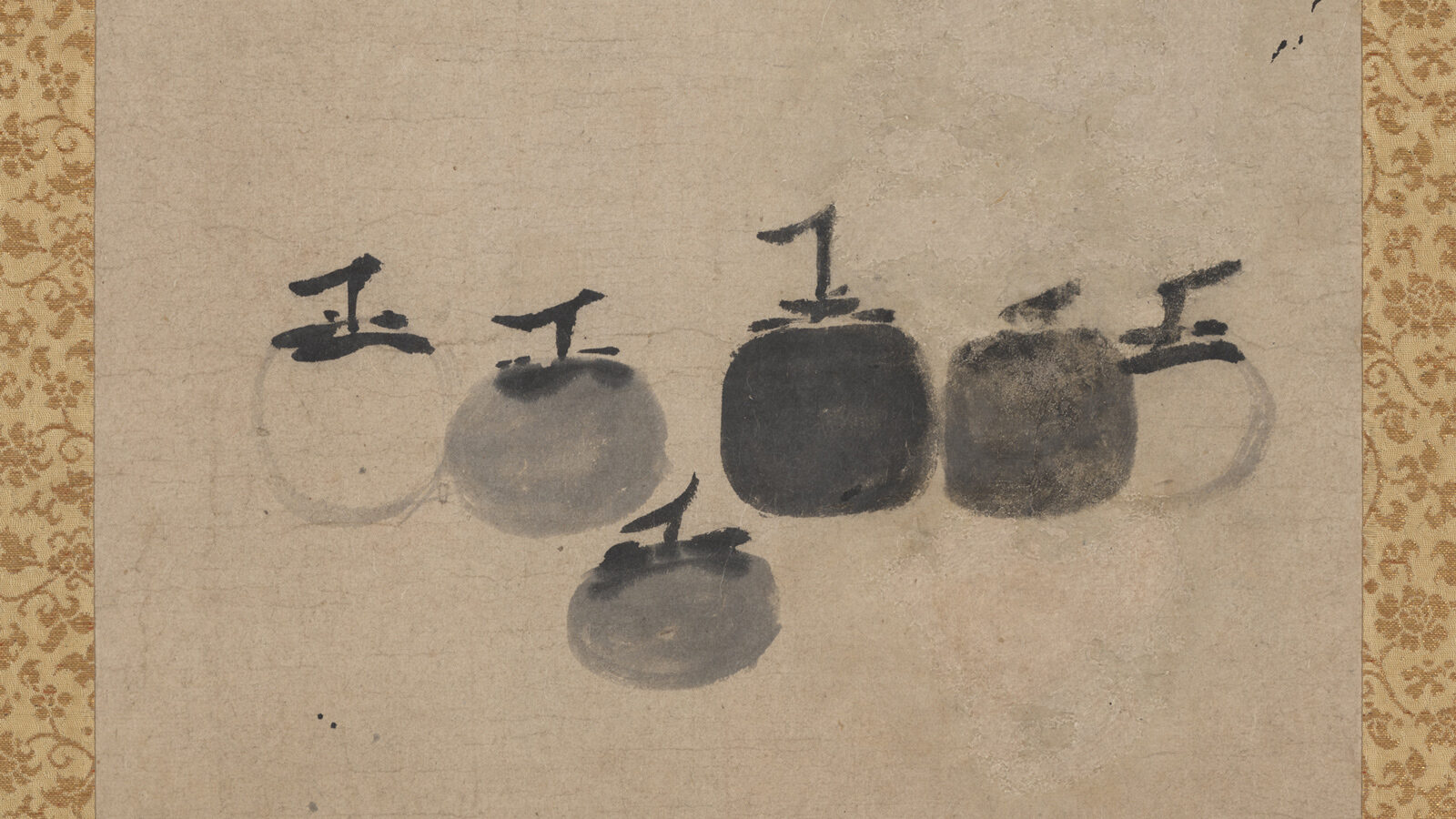The Heart of Zen features two extraordinary ink paintings, Persimmons (popularly known as Six Persimmons) and Chestnuts, on view in the United States for the first time. Attributed to the 13th-century monk Muqi, these exquisitely subtle compositions were painted in China and then crossed the ocean to Japan, where they have been designated Important Cultural Properties and treasured for centuries at Daitokuji Ryokoin Zen temple in Kyoto. Thanks to a joint effort by Ryokoin and the Asian Art Museum, this exhibition offers a once-in-a-lifetime opportunity to view these two works in an intimate setting, as well as providing a rare glimpse into the world of a Japanese Zen temple. The Heart of Zen explores the history and significance of these paintings, their place in temple life, and their eventual elevation as classic examples of Zen art in the United States. In conjunction with the exhibition, sessions of zazen meditation will be offered as a means of cultivating a state of peaceful awareness.
While each of the museum’s exhibitions of internationally loaned work is intended to promote international peace and cross-cultural understanding, The Heart of Zen also has a uniquely personal dimension. The exhibition was conceived when Ryokoin temple abbot Kobori Geppo visited the Asian Art Museum in 2017. After experiencing a deep sense of compassion for San Francisco’s underserved populations, the abbot decided to foster peace and harmony by sharing this pair of exceptional paintings with the city. Thanks to his generous gesture, visitors to the exhibition may discover a moment of peace to take with them as they face the tribulations of daily life.
Image: Persimmons, 13th century, attributed to Muqi (Chinese, active mid to late 13th century). China; Southern Song Dynasty. Ink on paper. Lent by Ryokoin Temple. Photo by Okada Ai, courtesy of the Kyoto National Museum.


